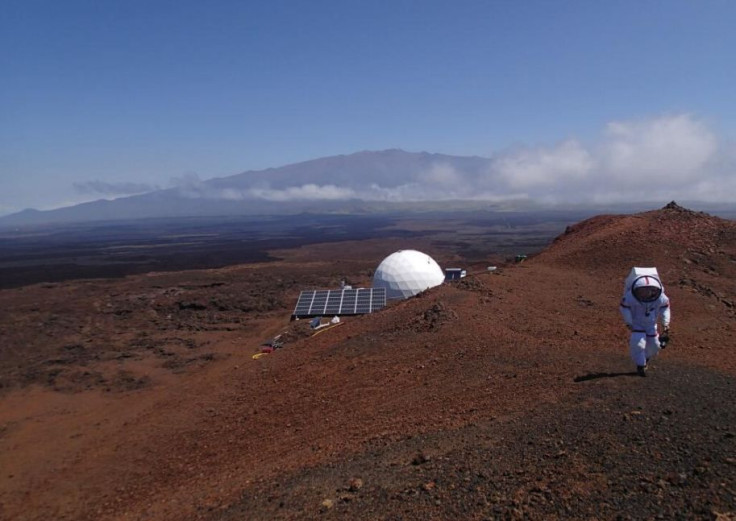NASA-Funded Mars Simulation In Hawaii Ends As Crew Leave Dome They Lived In For A Year

Six scientists returned to civilization Sunday after they exited from their Mars simulation habitat in Hawaii where they lived in for 365 days in near isolation.
The NASA-funded experiment, run by the University of Hawaii, required the scientists to live in a small dome set in a Mars-like environment on Mauna Loa mountain at about 8,200 feet above sea level. NASA plans to send humans to Mars by 2030, and in an effort to determine the resources, conditions and crew cohesion and performance, the six scientists had been living there since Aug. 29, 2015 — the longest test of its kind since a Russian mission that lasted 520 days.
“The UH research going on up here is just super vital when it comes to picking crews, figuring out how people are going to actually work on different kinds of missions, and sort of the human factors element of space travel, colonization, whatever it is you are actually looking at,” Tristan Bassingthwaighte, a doctor of architecture candidate at the University of Hawaii who served as the crew's architect, said in a statement.
During the yearlong experiment, the crew was monitored using cameras, body movement trackers, electronic surveys and other methods. The scientists were studied by their collaborators to gather data on a wide range of cognitive, social and emotional factors that may impact performance of astronauts during the trip to Mars and back, which is estimated to be a three-year journey.
While conducting research in a simulated Martian atmosphere, the crew had to live with limited resources, and could only communicate with others via emails that were delayed by 20 minutes — the time required for signals to travel to and from Mars. The scientists were allowed to go outside their dome while wearing a spacesuit with limited oxygen.
LIVE on #Periscope: After a year in isolation, Mars simulation experiment participants exit the dome #hiseas https://t.co/9yyXJaTa5e
— University of Hawaii System (@UHawaiiNews) August 28, 2016
“The researchers are looking forward to getting in the ocean and eating fresh produce and other foods that weren't available in the dome,” Kim Binsted, principal investigator for the Hawaii Space Exploration Analog and Simulation (HI-SEAS), reportedly said. “HI-SEAS is an example of international collaborative research hosted and run by the University of Hawai'i. So it's really exciting to be able to welcome the crew back to earth and back to Hawai'i after a year on Mars.”
© Copyright IBTimes 2024. All rights reserved.






















